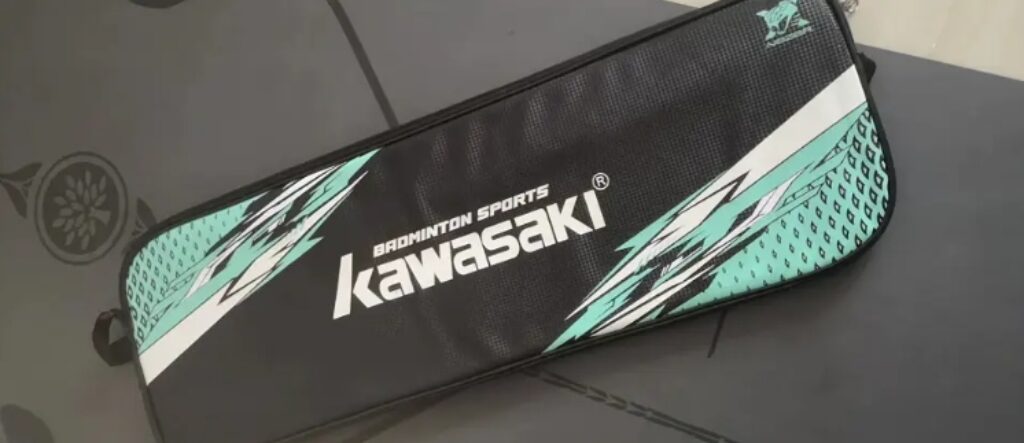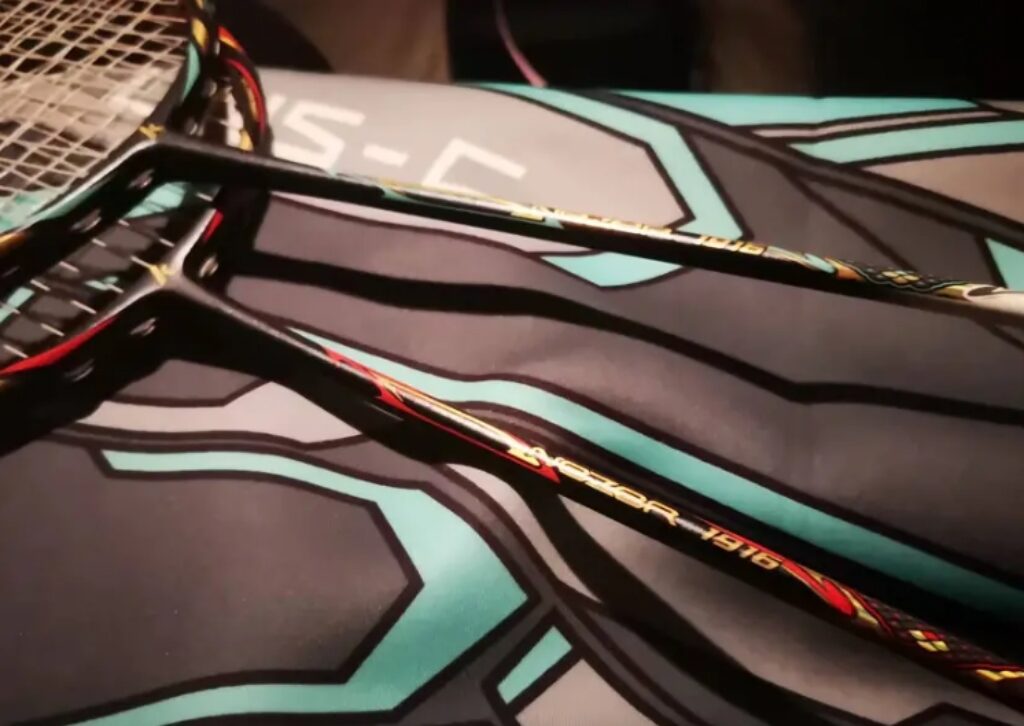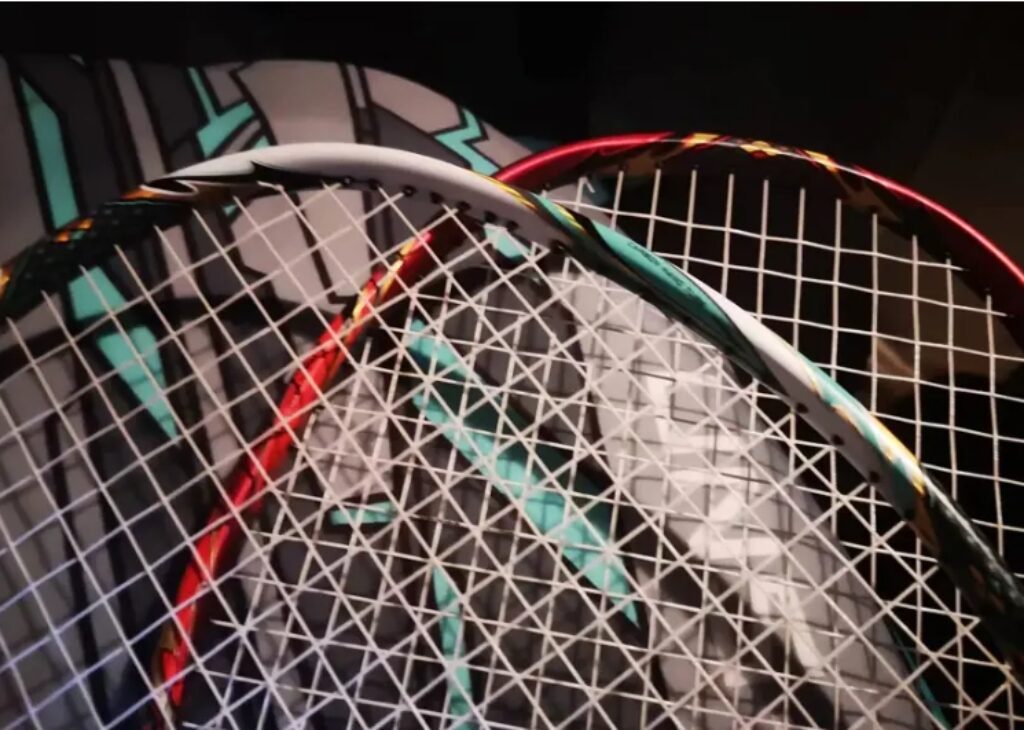Many badminton friends believe that among the many second-tier brands, Kawasaki is truly the king. In terms of material sourcing and technical capabilities, it has historically been a strong competitor to the major three brands. One can see that low-end models may sell well, but they struggle to gain significant recognition among more advanced players. During the process of collecting and experiencing various equipment, it’s easy to notice many beginners using the Ninja or Blue Porcelain rackets for casual play, while experienced players sometimes opt for older Kawasaki models like the bottom cap or Master series to teach newcomers.
After Kawasaki’s revival trend, it’s indeed time for them to showcase high-quality new products.

Specifications:
- Red model: 84±1g, balance point 290±3mm, medium-hard shaft
- Blue model: 82g, balance point 293±3mm, medium shaft
- Red used: 88.9g, balance point 304mm
- White (towel grip): 90.1g, balance point 300mm
- 6.5mm shaft material: 46T+30T, dual slot box frame material: 30T+40T, 76-hole string bed, small frame, warranty for 30 pounds, some components outsourced to CBN, string tension 26-28lbs vbs66n.
Believe me, this is a product that delivers an endless visual delight right after unboxing.
The manufacturer provides matching colored square covers for the Razer, making them uniquely stylish. After experiencing the K-18, I’ve noticed that some manufacturers are more willing to focus on product details. For example, Kawasaki does a great job with the quality of the cover; the inner lining and design of the bag are aspects many manufacturers tend to overlook. While most players who prefer practical bags for games might find this upgrade somewhat unnecessary, the fact that the product is well-prepared for transportation enhances overall appreciation.

Upon unboxing, a second wave of visual excitement follows. Both rackets look great. Although they share a similar design language, the color differences and the snake scale patterns make each racket visually appealing. The matte finish and the themed decorations on the wings and head of the frame reflect their names well; the blue model features a black, white, gold, and blue spiral pattern, while the red model combines black, red, and gold. Subjectively, the blue model appears more elegant, while the red model exudes a sense of aggression, aligning with their performance characteristics.
With both the blue and red rackets, the difference is felt immediately when holding them and swinging them without strings. Both are lightweight within the 4U category, but the red model has a slightly noticeable head-heavy feel. Considering that the Razer 1916 uses the second-generation frame, combined with a slender shaft, I initially thought these would be great for singles play. However, the official parameters and actual feel surprised me. While the frame’s design to reduce wind resistance isn’t extreme, the smaller frame’s reduced wind area and rounded edge allow for surprisingly high swing speeds. Undoubtedly, both rackets are well-suited for the fast-paced nature of doubles play.

Based on experience, Kawasaki’s past rating system indicates that rackets rated 3.5 stars and above have a significant learning curve. The previous Razer 19 was already a 5-star racket, and this 1916 model also uses 5-star materials. Will this premium model become out of reach? Fortunately, during warm-up, both rackets quickly dispelled my concerns about my physical condition. Despite the small frame, the high swing speed and moderately adjusted shaft hardness significantly ease handling, making it easier to find good leverage during active shots. For intermediate players, the only adjustment needed is adapting their timing to the faster swing speed. For beginner players, the Razer doesn’t have a high power threshold and low tolerance, making it a great choice beyond the Pollen Infiniti 003/004/007 for experiencing small frame feel, with a lower learning curve compared to the Radiation 6 and significantly lower than the Breaker BZ. Using it feels oddly familiar—“Why am I so skilled with this small frame? How many times have I paired with it?”
As previously mentioned, agility is the answer that the Razer twins provide. Whether red or blue, their performance in the front court during doubles is impressive, offering sufficient flexibility. The responsiveness during flat exchanges may not be evident, but when mixed doubles players handle awkward shots from their opponents, the Razer truly shines. It’s not only agile; the moderately firm grip allows for fine-tuning and spontaneous power delivery. If one prepares well with the racket, players who master short bursts of power can deliver more threatening shots. Between the two, the blue model, being slightly heavier but with a lighter head, excels in swing speed and stability.

To establish an advantage, controlling the net is crucial, especially during serve and return. The Razer performs admirably, providing a sense of control during aggressive plays. The ability to apply pressure without resulting in high or far blocks is notable, especially in close-level matches where high placement can dominate. If one practices soft shots beforehand, it becomes even more effective. However, trying to use flick shots or to sidestep opponents at the net may feel a bit light; it still requires the user’s solid fundamentals to compensate for the loss of heft.
This character often leaves opponents perplexed: “Wait, I was the one who initiated the attack…”

When it comes to offense, the red Razer performs exceptionally well despite its weight disadvantage. Instead of relying on sheer force, it focuses on making every shot threatening. The small frame allows for explosive, powerful feedback during concentrated hits, while the ultra-slim shaft, made of high-modulus carbon fiber, provides sufficient elasticity. The energy transfer is impressive, resulting in strong initial and final speeds and an appealing sound on impact. While the frame and T-head offer decent torsional stability, I still hope for a more robust feel during dynamic, varied attacks that can slice through defenses. The blue Razer’s lighter head and softer shaft haven’t yet unlocked its potential for heavy smashes, which is somewhat regrettable.
However, the adaptability of both models in defense is satisfactory. Even with a string tension close to my limit (26-28 pounds), handling continuous defensive positions and shots to the backhand and overhead areas is manageable. The power feels good, and the overall effort is low, highlighting the Razer’s thoughtful design. The enjoyment in both offense and defense creates a blissful experience.

In ensuring the string tension and physical readiness are consistent, I was fortunate to parallel test both new models. The Razer twins delivered commendable performance, particularly with their excellent finish and craftsmanship. They have a friendly learning curve and a unique feel, reflecting their high-end pricing. However, the lack of weight can sometimes lead to a less solid feel in feedback. After differentiating their performances, the blue and red models should have distinct places in the equipment lineup.
Of course, many players are concerned about pricing. I was recommended to purchase from a vendor currently offering impressive discounts, so it’s worth checking out. The official prices don’t really matter anymore.

Leave a Reply